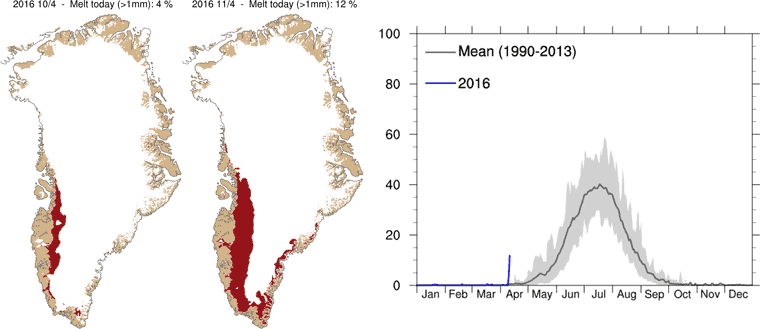A massive portion of the Greenland ice sheet has started to melt, taking researchers by surprise. The vast region is experiencing a freakishly early spring thaw, with 12% of Greenland’s ice melting on Monday, according to the Danish Meteorological Institute.
“We had to check that our models were still working properly,”6 Peter Langen, climate scientist at DMI, told blog Polar Portal.

This is extremely worrying. Not only is a big part of Greenland melting, but it’s melting much sooner than it normally is. Thawing season normally starts in late May or June. The three earliest ever recorded meltings started in May 5, 2010, May 8, 1990, and May 8, 2006. This is almost a month earlier. Basically, these are hot days for July, let alone April.
“Even weather stations quite high up on the ice sheet observed very high temperatures on Monday”, said Robert Fausto, a scientist at GEUS who maintains PROMICE.dk melt data. “At KAN_U for example, a site at 1840 m above sea level, we observed a maximum temperature of 3.1°C. This would be a warm day in July, never mind April”. Other PROMICE stations in the network at lower levels had daily average temperatures between 5 and 10 °C.
The good news is that because this happened so early in the year, there’s a good chance that the melting water will freeze again, but the bad news is that by doing so, it will suck heat energy from the depths, which means that the entire system will be left more vulnerable in the face of future thawings. All in all, it seems like Greenland is set for another hot year.






